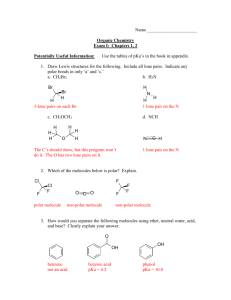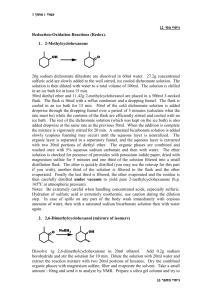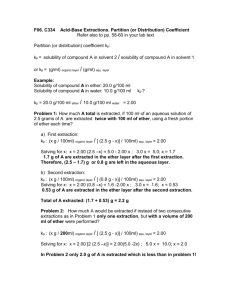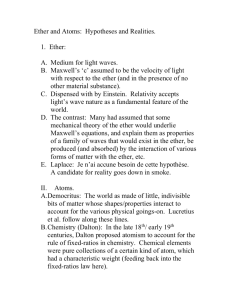BEYOND THE SPEED OF LIGHT by William F. Hamilton copyright
advertisement
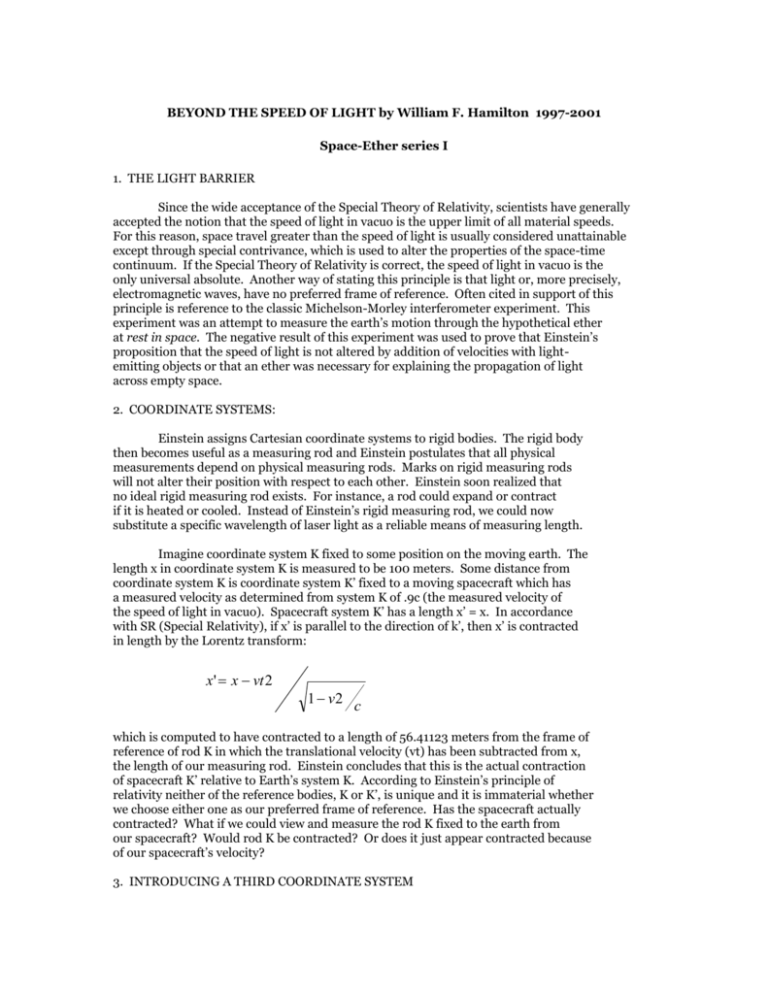
BEYOND THE SPEED OF LIGHT by William F. Hamilton 1997-2001 Space-Ether series I 1. THE LIGHT BARRIER Since the wide acceptance of the Special Theory of Relativity, scientists have generally accepted the notion that the speed of light in vacuo is the upper limit of all material speeds. For this reason, space travel greater than the speed of light is usually considered unattainable except through special contrivance, which is used to alter the properties of the space-time continuum. If the Special Theory of Relativity is correct, the speed of light in vacuo is the only universal absolute. Another way of stating this principle is that light or, more precisely, electromagnetic waves, have no preferred frame of reference. Often cited in support of this principle is reference to the classic Michelson-Morley interferometer experiment. This experiment was an attempt to measure the earth’s motion through the hypothetical ether at rest in space. The negative result of this experiment was used to prove that Einstein’s proposition that the speed of light is not altered by addition of velocities with lightemitting objects or that an ether was necessary for explaining the propagation of light across empty space. 2. COORDINATE SYSTEMS: Einstein assigns Cartesian coordinate systems to rigid bodies. The rigid body then becomes useful as a measuring rod and Einstein postulates that all physical measurements depend on physical measuring rods. Marks on rigid measuring rods will not alter their position with respect to each other. Einstein soon realized that no ideal rigid measuring rod exists. For instance, a rod could expand or contract if it is heated or cooled. Instead of Einstein’s rigid measuring rod, we could now substitute a specific wavelength of laser light as a reliable means of measuring length. Imagine coordinate system K fixed to some position on the moving earth. The length x in coordinate system K is measured to be 100 meters. Some distance from coordinate system K is coordinate system K’ fixed to a moving spacecraft which has a measured velocity as determined from system K of .9c (the measured velocity of the speed of light in vacuo). Spacecraft system K’ has a length x’ = x. In accordance with SR (Special Relativity), if x’ is parallel to the direction of k’, then x’ is contracted in length by the Lorentz transform: x ' x vt 2 1 v2 c which is computed to have contracted to a length of 56.41123 meters from the frame of reference of rod K in which the translational velocity (vt) has been subtracted from x, the length of our measuring rod. Einstein concludes that this is the actual contraction of spacecraft K’ relative to Earth’s system K. According to Einstein’s principle of relativity neither of the reference bodies, K or K’, is unique and it is immaterial whether we choose either one as our preferred frame of reference. Has the spacecraft actually contracted? What if we could view and measure the rod K fixed to the earth from our spacecraft? Would rod K be contracted? Or does it just appear contracted because of our spacecraft’s velocity? 3. INTRODUCING A THIRD COORDINATE SYSTEM The Michelson-Morley experiment was designed to measure the absolute motion of the earth through a stationary ether. The M-M experiment made use of an interferometer, a device that measures the amount of interference between two beams of light. The interferometer has four critical points. A beam of light from some suitable source (S) is split into two beams by a partially silvered mirror (A) with one beam deflected at 90-degrees to a second mirror (B) and the other beam directed at 0-degrees to a third mirror (C). The beam from mirror B is now reflected through A to a detector (D) and the beam from mirror C is deflected 90-degrees by mirror A to interfere with the first beam at detector D. The distances of paths within the interferometer are such that AB = AC =AD = SA, or SC = BD. Thus if a beam of light of a specific color is emitted at S and travels along equal path lengths and arrives at D in phase, then the conclusion is that the beam has traveled at the same velocity along paths SC-CD and SB-BD. B A C S Interferometer D If the split beam traveled at different velocities due to a retardation of its velocity on any of the paths due to ether drag, then the beam should arrive at D out-of-phase and interference fringes will be registered. This is the case in the M-M experiment for measuring the absolute velocity of the earth through a stationary ether. Other interferometer experiments and the the case for an entrained ether will be addressed as we proceed with our analysis. 4. THE SWIMMER ANALOGY For simplicity an analogy of the experiment, called the swimmer analogy, is given to explain the key elements. The critical points are now represented as the corners of a square and the paths are given as channels rigidly fixed to the banks of a river. The channels are fixed by straight boards and two swimmers represent the beams of light that are split by the interferometer with one swimmer swimming parallel to the river (ether stream) and the other swimming perpendicular to the river. The ether which was at rest is now a moving river. This would be a preferred frame of reference. The earth and the interferometer are now at rest with respect to the river and are represented by the river banks and our straight boards. All points of motion are now inverted, and the preferred frame is now in relative motion. In accordance with this analogy and the results of the actual M-M experiment, the results are negative, a negligible amount of interference occurred, and no variation is found in the speed of the swimmers or the speed of light in moving from one point to another and back again. We could conclude from this that the speed of light is constant and the ether doesn’t affect it’s speed or just doesn’t exist! However, the swimmer analogy contains a fatal flaw or two. When inverting stationary positions for moving positions and vice versa, the movement of the light beams themselves are not inverted. In other words, the swimmers would not be swimming! A correct analogy would show the wooden frame traveling across a still lake and the swimmers would be swimming, one parallel to the motion of the wooden frame, and one normal to its motion. If we were to now measure the distance each swimmer traverses with respect to the water in the lake, the path lengths of the triangle from position (A) to position (B’) and back to position (D) would not equal the path length of the swimmer going from position (A) to position (C’) and back to (A’). If two swimmers traverse unequal path lengths in equal times, then the velocities of the two swimmers are not equal. S1 2(1 /sin(A-B) A-B) is the path length for swimmer 1. S2 = (A-C’) + (C’-A’) is the path length for swimmer2. S2 > S1 S1v S2v If there is one universal coordinate system, the ether of space, we could visualize these models, but we could not affix a measuring device to the ether itself. We would have to assume that the velocity of light is changing when it is emitted from an object moving through a motionless ether. But, are we to assume the ether is motionless? Is there any other experiment we could perform to determine if the velocity of light is invariant in all reference frames, or whether it varies by composition with kinematic sources? Professor Laro Schatzer has made this cogent statement regarding an ether frame: “There have been a variety of theories to describe electromagnetic waves (light) as excitations of some medium, quite in analogy to sonic waves which propagate in the medium air. This hypothetical medium was called the ether and it was supposed to be in rest in the absolute spacetime frame. That is why this frame is also called ether frame sometimes. Since the establishment of the theory of special relativity it has become extremely unpopular among scientists to speak about an "ether". However, we know today that electromagnetic waves are indeed excitations of some "medium". However, this medium is not a solid or a liquid in the classical sense, but it is governed by the laws of quantum mechanics. Quantum field theorists found the name vacuum for it. Some people interpret the vacuum as space-time itself, but this does not cover the fact that its true nature still remains a mystery. Anyhow, the term quantum ether might be used to indicate a possible modern synthesis of both concepts.” 5. AN ENTRAINED ETHER A. Brillet and J.L. Hall conducted a modern ether drift experiment in 1979. Brillet and Hall put a laser on a rotating platform and split the beam. One part of the beam went into a Fabry-Perot interferometer, the other was directed via mirrors off the platform to be compared with a reference beam from a stationary laser. The frequency of the rotating laser was compared with that of the reference laser; the difference was Fourier analyzed. Any anisotropy of the speed of light would show up as a frequency shift which varied dependent on the direction of the interferometer. If the old pre-Lorentz ether theory were true (static ether), they would have found a frequency shift dependent on sidereal direction of the interferometer and found no such effect. They also found a frequency shift of 17 Hz at twice the table rotation rate, which they could not explain on direction of interferometer with respect to the lab. It is this effect which is predicted by an entrained ether theory. An entrained ether theory favors a dynamic ether, an ether that can be entrained in motion by a rotating object, such as earth, embedded within the dynamic ether. 6. ETHER EXPLANATIONS If a velocity-dependent medium such as the ether could be established by experiment, then it could open the door to alternative explanations to SR and GR regarding physical phenomena. If this ether is quantized, then we could explore the theoretical nature of a quantum ether. Is gravity a result of some state of the quantum ether? Does the quantum ether explain inertia? What does an electric or magnetic field do to the state of the quantum ether? Are material particles some wave-state of the quantum ether? Can we unify physical principles by considering a quantum ether? A complete theory of the ether has been attempted but many such theories lack the sweep and power of modern mathematical theories. A complete theory of the ether would not only account for the origin of forces, but the origin of matter and mass. Past theorizing has postulated the existence of circulating flows in a hydrodynamic ether that form hollow or ring vortices that give rise to electromagnetic forces and constitute the elementary particles that make-up the atomic nature of the world. Experiments conducted on the alternating gradient synchrotron with colliding protons seem to indicate that protons behave like composite vortices as described by Helmholtz and others in their excellent treatises on hydrodynamics. 7. EXPERIMENTING WITH LIGHT A test of light speed could be made if some object holding a measuring device could accelerate to some sizable fraction of light speed, say .5c, and test the speed of an electromagnetic emission from this object through space to a reflection point and back to the object from the reference frame of the moving object. Also, Bryan Wallace delivered a paper on the 1961 measurements of the distance of Venus using radar. Wallace claims that the inconsistencies in the measurements are not supportive of SR, but support a C+v velocity for the radar signal. Perhaps a review of this data, and further refined experiments could determine if the data is consistent with SR or Galilean addition of velocities. 8. INERTIA Inertia is simply the tendency of a mass to maintain a uniform state of motion. Newton stated it this way (paraphrased): Every body persists in its state of rest or of uniform motion in a straight line unless compelled to change that state by forces impressed on it. This is his famous 1st Law of Motion. Notice that there really is no distinction between "rest" and "uniform motion". Uniform motion simply means moving at a constant velocity in relation to observers that measure that motion. A body observed to be at rest relative to one observer can, at the same time, be observed to be moving at a constant velocity v by another observer who happens to be moving at v relative to the first observer. The important point is that a body's inertia is simply its tendency to maintain its current state of uniform (unaccelerated) motion. We can restate this as the tendency of a body, when no net force is acting upon it, to move in a straight line through space and time. The origin of inertia is treated as a mystery in physics. There are several theoretical proposals postulating the origin of inertia. Austrian philosopher-physicist Ernst Mach proposed that the earth's rotation is not relative to any absolute reference such as space or some other ethereal substrate, but is rather defined in reference to all the other masses in the universe ("the fixed stars", as he put it). This became known as Mach's Principle. Some scientists propose a General Relativity solution to the origin of inertia. One proposal is that inertia is an effect of gravitomagnetism. Another proposal is that radiation pressure is the source of inertia. Still another proposal attributes inertia to the zero-point energy that is found everywhere throughout space. I tend to agree with one proposal that attributes inertia to the ether, however the difficulties with this idea and the objections to the existence of ether have been numerous in the scientific community. It is necessary to both revive and revise the idea and show that space itself is the ether, that space is a non-material medium that exerts a pressure on material bodies and that we interpret this pressure effect as gravity or inertia depending on our motion. Space-ether has its own range of motions that may be described as hydrodynamic. It is this approach to gravity and inertia which I feel holds the most promise for space travel. 9. SPACE DRIVES Why is it important to determine the nature of the ether of space and time? One obvious answer is to determine whether we could find new ways to travel through space or time. The most common solution offered in the past has been to use hyperspatial dimensions to cross enormous distances that separate stellar systems. While it is true that space could harbor more than three dimensions, and time could be enfolded from greater than one dimension, the energy dimensions of ether have yet to be explored. NASA is now interested in breakthrough physics, on new solutions to space travel, on dispensing with rocket propellants and finding new sources of energy, and on theoretical means for breaking the light barrier. If the light barrier can be broken by some sort of inertial drive, a drive that changes the resistance of the ether, reducing that resistance in a forward direction, then the velocity of an object may, indeed, exceed the measured velocity of light. In actual fact, if the properties of weight and mass can be nullified by application of electromagnetic forces to the ether in the vicinity of our test object, the object may be propelled without inertial lag and “g” forces to reach incredible speeds with the slightest expenditure of energy. The very periodic vibrations of time may vary with the application of forces that affect the etheric substrate of space and means may ultimately be found to transport objects from spatial origin to destination by altering the flow of time. End of Part I in the Space-Ether series



